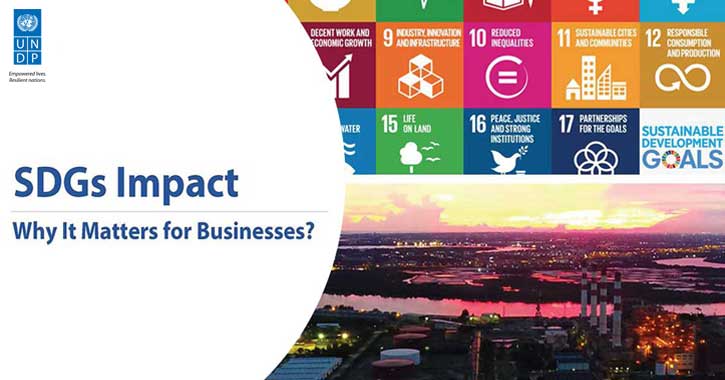
Undeniably, today’s world is covered with images of poverty, discrimination, inequality and injustice. They are the factors behind violent extremism whether at a community, national or global level. The timely important question is what does it take to prevent violent extremism? What tools or measures can stop violence-induced tragedies before they happen time and time again?

Preventing violent extremism is not averting violence with more violence. It’s about how to identify the problem as well as its root cause to collectively find a peaceful solution. The approach requires cooperation between the government, local authorities and citizens.
Although there hasn’t been a clear example of violent extremism in Thailand, the risks that can lead to it are in view. Here, the space for all people to share their opinion, dialogue and problems is quite limited. This includes various issues that still go unaddressed such as women’s limited social and political voice, the apparent gender inequality in Thai society, and inequitable access to opportunities for the excluded and underprivileged.
Getting informed or a better understanding of the issues is a good and essential first step. We had a chance to meet Asst. Prof. Dr. Janjira Sombatpoonsiri, a lecturer of international relations at the Faculty of Political Science, Thammasat University, and talked to her about preventing violent extremism in Thailand.

(photo credit : GM Magazine, January 2017 issue)
What is PVE?
Asst. Prof. Dr. Janjira: PVE or Preventing Violent Extremism is to avert violence that is the result of extreme ideologies. The violence is justified by a certain extreme ideology or thought, and targeted at someone or some group who the extremist sees as their “opposition”, or who they think “taints” their society. To prevent such violence, we need to look at the social structure and culture that shape the extremists. These people often live in social conflict, and when people face conflict on a daily basis, being in this loop of animosity, they would harbour grievance. It can be grievance over economic injustice, glaring class disparity, or religious and racial discrimination.
Some may feel that a certain policy doesn’t give them equal access to education. Others may feel similarly about other policies. There are varying reasons for the grievance. So, to create protection against extreme ideologies, we need to study and understand people’s grievances, seeing what drives them to the point of violent conflict.

PVE in the context of Thailand
Asst. Prof. Dr. Janjira: The meaning of violent extremism we understand now derives from the experience of our neighboring countries like Indonesia and the Philippines, as well as many countries in the Middle East and the West, which may not represent the same experiences that Thai people have. From the dialogue in Thailand, the definition of violent extremism here is not quite set. Each group or sector has its own understanding of the term, depending on their experience and stance in different situations of conflict. For example, when we talk to the civil society, we’ll learn that the state is at the center of it, they’re the one inflicting violence on the people and therefore is the root cause of violence. Meanwhile, from the state’s point of view, violent extremism comes from a certain group of people who commit violence against another group of people who have a different identity from them. So for us, I think the definition of violent extremism should be based on the context of Thai society. That is, we understand the conditions of violent extremism by looking at the relevant dimensions – social, political, economic, etc – rather than look at who commits violence.
Work to prevent violent extremism
Asst. Prof. Dr. Janjira: The UNDP’s work to prevent violent extremism in Thailand is divided into many units, but they can be grouped into two main areas, namely:
1. PVE in the conflict zones of Thailand’s three deep southern provinces: Various programs are set up to research the social and cultural conditions that enable or assist violent conflict. For example, a program that focuses on Thai-Muslim tolerance or a program that promotes dialogue between Buddhists and Muslims to develop good understanding between people of different faiths.
2. PVE in other areas in Thailand: research on the root causes of grievance in all regions – north, northeast, central and south – and what motivates violent extremist actions and how
UNDP also has a team of people that monitors hate speech in the country, identifying and analyzing open conversations and statements on social media platforms like Twitter and Facebook that discriminate against minority groups. Additionally, we collaborate with government agencies to support various violent extremism prevention initiatives.

Public awareness
Asst. Prof. Dr. Janjira: There still isn’t that much awareness about preventing violent extremism among the general public. Because its concept originated elsewhere, that is, violence-stricken countries or societies. So now we’re working to raise more awareness and create a better public understanding of the issue.
That being said, there are a lot more to be done and challenges to tackle. We’re going to focus on building cooperation between different sectors – from the private sector, organizations to civil society – through a strategic management approach, research, or consultation with experts in various areas in order to come up with Thailand’s approach to preventing violent extremism.

Sources :
– Asst. Prof. Dr. Janjira Sombatpoonsiri, Lecturer of International Relations, Faculty of Political Science, Thammasat University
– The United Nations and The World Bank, 2018, “Pathways for Peace: Inclusive Approach to Preventing Violent Conflict”. Executive Summary, Washington D.C. Bank. Licensed under CC BY 3.0.
– http://www.asia-pacific.undp.org/content/rbap/en/home/programmes-and-initiatives/extremelives.html?fbclid=IwAR3G9xDf15DZCyru0BvszNMAL5rcdITCcR4YdKIPrmfT8JmzxIEAaz5QFzo
– https://www.undp.org/content/undp/en/home/2030-agenda-for-sustainable-development/peace/conflict-prevention/preventing-violent-extremism.html
– https://www.undp.org/content/undp/en/home/blog/2019/new-approaches-to-preventing-violent-extremism.html
































